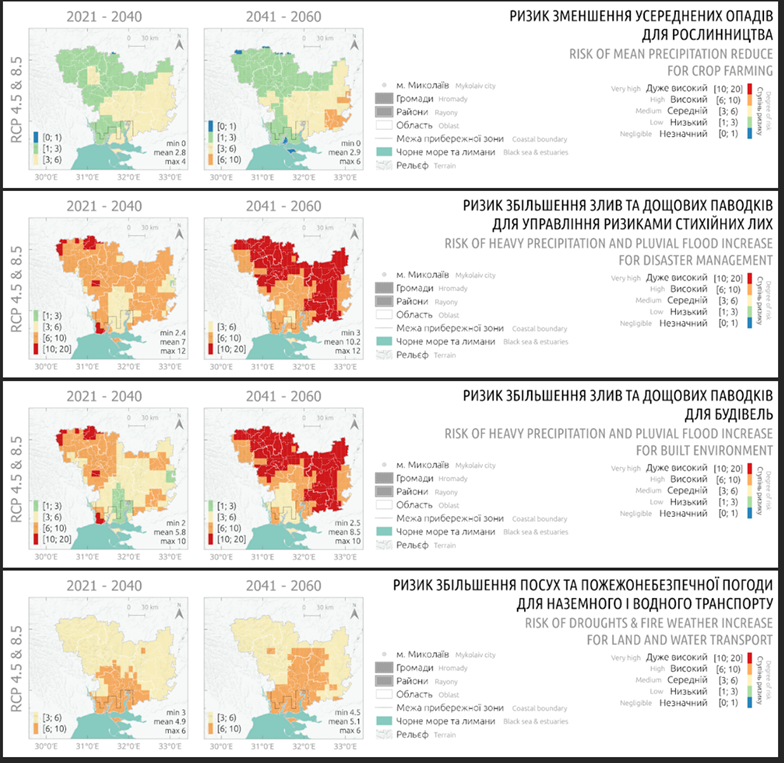According to estimates of the experts, during three years of a full-scale invasion additional emissions of greenhouse gases amounted to approximately 230 million tons of carbon dioxide equivalent that equals to cumulative annual emissions of the following four European countries: Austria, Chechia, Slovakia and Hungary. These additional emissions deplete our common global carbon budget to the point when living conditions on big territories of our planet will become unacceptable.
APENA3 project has made a significant contribution to ensuring that climate challenges are considered during post-war recovery of Ukraine. I truly hope that the climate adaptation strategies we’ve developed will soon be put into action and help us rebuild Ukraine “better than before.”
All of our pilot regions – Lviv, Mykolaiv and Ivano-Frankivsk oblasts – have various geographical positions, landscapes, climate and economic characteristics. Mykolaiv oblast is special because it was occupied and was affected by the war more than other regions. Its adaptation strategy can be scaled up to other oblasts in the region that were affected by a destructive impact of hostilities.
It has been a fulfilling experience. Our team first developed a unique Methodology for assessing climate change risks and vulnerabilities across different economic sectors at the regional level. This was a pioneering effort, as existing global methodologies typically focus either on specific sectors or on smaller areas like cities or communities. Until now, there hadn’t been a comprehensive approach tailored for large regions, such as oblasts, where all sectors are represented simultaneously.
We have studied climate, demographic, geographic and economic features of the regions, assessed sensitivity of sectors to climate change, analyzed risks, selected adaptation measures that may be implemented in future.

Developed by APENA3
Our activity resulted in climate change adaptation strategies for three oblasts of Ukraine and implementation plans for them. The documents contain a list of adaptation measures for each region, estimated for 7 years, their cost of implementation and a list of potential donors and investors that can be contacted to attract financing.
Adaptation measures cover most spheres of life: from critical infrastructure of energy, transport and agriculture to tourism, healthcare and cultural heritage. Establishment of green areas in cities, construction of energy-efficient buildings, transition to environmentally friendly transport, introduction of climate friendly ways of land use – all of these are adaptation actions. Adaptation is not only a path to survival within new climate conditions but also a way to make our living space comfortable and make economy and infrastructure resilient to challenges.





